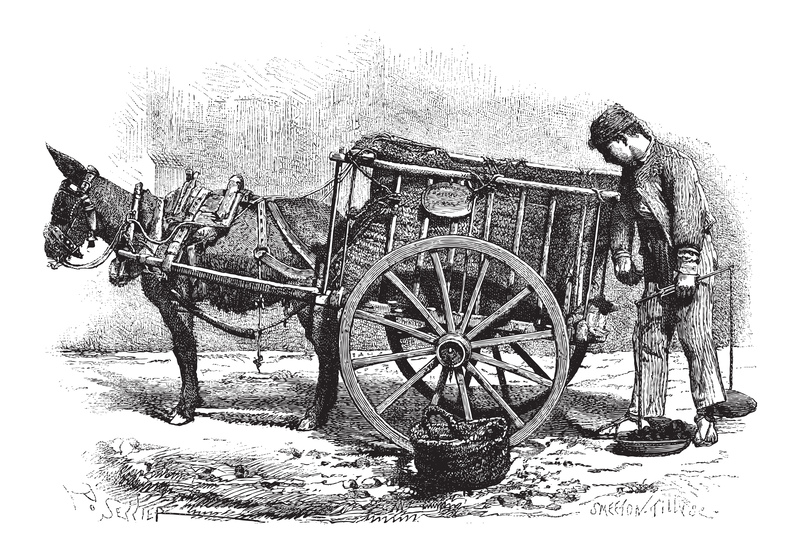Tips for Responsible Collection and Disposal of PPE Waste
The use of personal protective equipment (PPE) has significantly increased worldwide, especially following global health crises. From medical facilities and laboratories to everyday households and businesses, single-use masks, gloves, gowns, and face shields are more prevalent than ever. As much as PPE safeguards our health, improper disposal and collection can pose serious risks to the environment and public well-being. This guide provides an in-depth look at responsible collection and disposal of PPE waste, offering practical steps and actionable tips for individuals, organizations, and communities.
Understanding PPE Waste: Types and Environmental Impact
Before addressing proper collection and disposal, it is essential to understand what constitutes PPE waste and why its management is crucial.
What is PPE Waste?
PPE (Personal Protective Equipment) waste typically includes:
- Masks (surgical, N95, and cloth in some cases)
- Gloves (latex, nitrile, vinyl, etc.)
- Face shields and goggles
- Gowns and coveralls
- Disposable shoe and head covers
Why is PPE Waste Management Important?
The improper disposal of PPE waste can lead to:
- Environmental pollution--Most PPE items are made from non-biodegradable plastics, contributing to landfill overflow and microplastic contamination in oceans and rivers.
- Spread of infection--Discarded PPE can potentially carry pathogens, increasing the risk of transmission among sanitation workers and the public.
- Wildlife risks--Animals can become entangled in discarded PPE or ingest small pieces, harming their health.

Best Practices for Collecting PPE Waste
Effective PPE waste collection is the foundation of responsible disposal. Adopting the following practices ensures safety and environmental protection.
1. Use Dedicated PPE Waste Bins
Always use separate bins marked for PPE waste. These bins should be:
- Clearly labeled ("PPE Waste Only") and color-coded (e.g., red or yellow)
- Placed at prominent points--building entrances, exits, and high-traffic areas
- Lined with leak-proof bags that can be securely tied
2. Avoid Mixing PPE Waste with Regular Trash
Never dispose of PPE items like masks and gloves in general garbage bins. Mixed waste increases the likelihood of contamination and complicates proper disposal downstream.
3. Encourage Use of Reusable PPE (When Appropriate)
Where possible, opt for reusable and washable PPE, such as cloth masks and protective goggles, instead of single-use alternatives. This reduces the volume of PPE waste at the source and benefits the environment.
4. Collect and Store PPE Waste Safely
To minimize health and environmental risks:
- Personnel handling PPE waste should wear gloves and, if needed, additional protective gear
- Seal PPE waste bags tightly before removing
- Do not compact or crush the waste, which may expose handlers to hazards
- Store PPE waste in a secure, well-ventilated location until disposal
Proper Disposal Methods of PPE Waste
Disposing of PPE waste responsibly protects sanitation workers, prevents environmental contamination, and curtails the spread of disease. Choose or advocate for the safest disposal practices in your setting.
1. Follow Local Guidelines and Regulations
PPE waste treatment guidelines can differ by city or country. Some areas have dedicated hazardous waste streams or special collection days. Always check with:
- Municipal waste management services
- Healthcare facility protocols
- Environmental protection agencies
2. Utilize Approved Disposal Facilities
Take large quantities of PPE waste to:
- Medical waste treatment centers
- Authorized hazardous waste disposal sites
- Special drop-off points organized during public health emergencies
3. Never Litter or Burn PPE Waste Unsupervised
Never dispose of PPE waste in open public spaces, drains, or water bodies. Open burning is also prohibited and hazardous, releasing toxic fumes and microplastics. Responsible handling is everyone's duty.
4. Consider Safe On-site Disposal for Households
If no dedicated PPE waste collection exists for households, follow these steps:
- Place all PPE waste in a separate, double-bagged bin
- Spray with a disinfectant before sealing the outer bag
- Clearly label the bag as "PPE Waste"
- Dispose of it following local waste pick-up guidelines, informing collectors when possible
Reducing PPE Waste at the Source
Beyond collection and disposal, the most effective way to address PPE waste management is to generate less of it from the beginning. Here are several strategies:
1. Choose Reusable PPE
Opt for washable masks and durable gloves for daily life (where appropriate and safe). Ensure regular sanitization between uses, following manufacturer or health authority instructions.
2. Educate Staff and Users
Training and clear signage encourage correct use and disposal of PPE items. This is especially vital in workplaces, schools, and public facilities.
3. Conduct Regular Audits
Monitor PPE consumption and waste generation. Use audit results to optimize usage, switch to less wasteful alternatives, or adjust procurement practices.
4. Encourage Responsible Supply Chains
Prefer suppliers offering sustainable PPE options, such as those made from biodegradable or recycled materials. Support innovations in eco-friendly PPE and urge industry-wide changes.
Risks Associated with Improper PPE Waste Disposal
Ignoring PPE waste management responsibilities can result in far-reaching consequences:
- Public Health Threats: Unattended or improperly discarded PPE can carry infectious agents, exposing sanitation workers, animals, and the general public.
- Environmental Hazard: Plastics in PPE can take hundreds of years to degrade, leaching chemicals and microplastics into ecosystems.
- Legal Consequences: Many regions impose strict penalties for illegal or improper PPE waste disposal.
Community and Corporate Roles in PPE Waste Responsibility
Community Involvement
Communities can make a significant impact by:
- Launching local PPE waste collection programs
- Hosting public education campaigns on proper disposal
- Collaborating with waste management companies for safe handling procedures
Corporate and Organizational Responsibility
Corporations and institutions have a duty to implement and model responsible collection and disposal of PPE waste through:
- Providing accessible and correctly labeled PPE disposal bins throughout their premises
- Training employees on correct PPE usage and disposal
- Partnering with certified waste management and recycling services
- Reporting on PPE waste management efforts in sustainability disclosures
Innovations and Alternatives in PPE Waste Management
The growing global focus on sustainability has sparked the development of innovative solutions to counteract PPE pollution. Some of these include:
- Biodegradable and Compostable PPE: Companies are developing masks and gloves from plant-based materials. These break down more quickly and lessen environmental burden.
- Recycling Programs: Specialized programs collect and mechanically recycle certain PPE types (like polypropylene masks), turning them into construction materials, park benches, or plastic pallets.
- Waste-to-Energy Processes: Advanced incineration technologies convert PPE waste into electricity or heating, reducing landfill usage.
- Community Drop-off Points: Pharmacies, supermarkets, and public buildings hosting dedicated PPE drop-off boxes for safe, centralized collection.
While these solutions are promising, the key to success lies in widespread education, adoption, and regular advocacy for responsible PPE waste disposal.

FAQs about PPE Waste Collection and Disposal
How should I dispose of used masks and gloves at home?
Place used masks and gloves in a separate, sealed plastic bag, label it as "PPE Waste," spray with disinfectant if possible, and dispose of it with your household waste on the designated collection day.
Can used PPE be recycled?
Most standard recycling facilities do not accept contaminated PPE. However, some organizations run specialized recycling programs for clean and dry PPE items, mainly aimed at large-scale users.
What should businesses do with PPE waste?
All businesses should provide clearly labeled bins, train staff on responsible disposal, and contract with authorized waste services for proper handling and destruction.
Conclusion: Protect Health and Planet by Managing PPE Waste Responsibly
PPE remains a crucial tool in disease prevention and workplace safety, yet its environmental consequences must not be ignored. From proper collection methods to safe disposal options and waste reduction at the source, everyone--from individuals to organizations--has a role to play. By adopting the tips above for the responsible collection and disposal of PPE waste, we can all contribute to a safer, cleaner, and more sustainable world.
Remember: The choices we make today about PPE waste management will shape the environmental health of future generations. Practice responsible disposal, spread awareness, and champion innovation for positive change.
